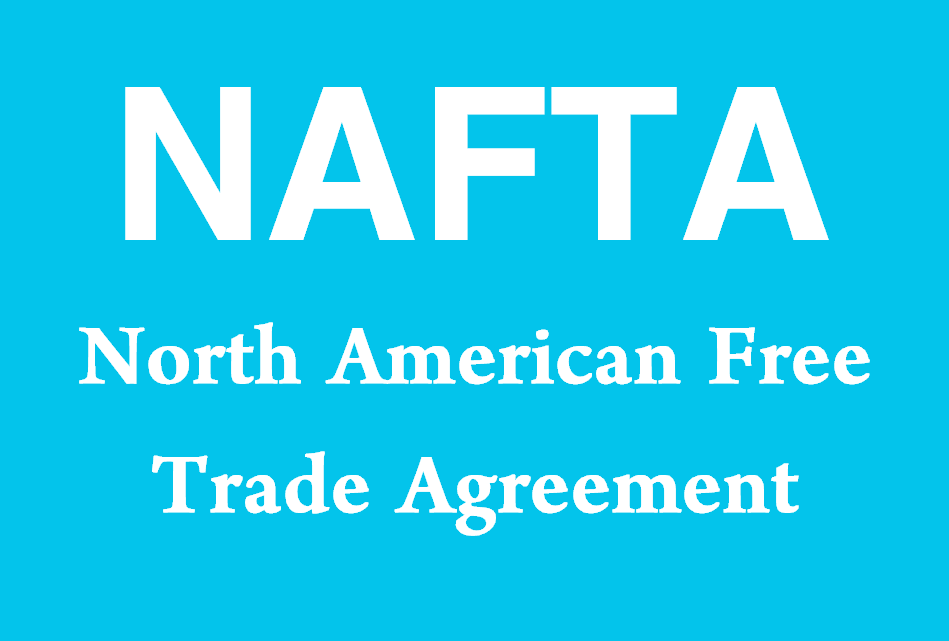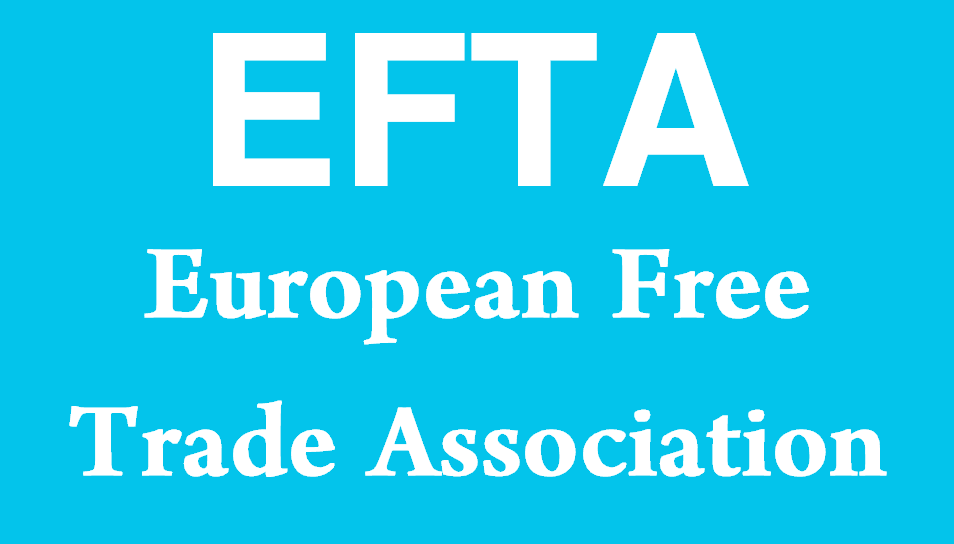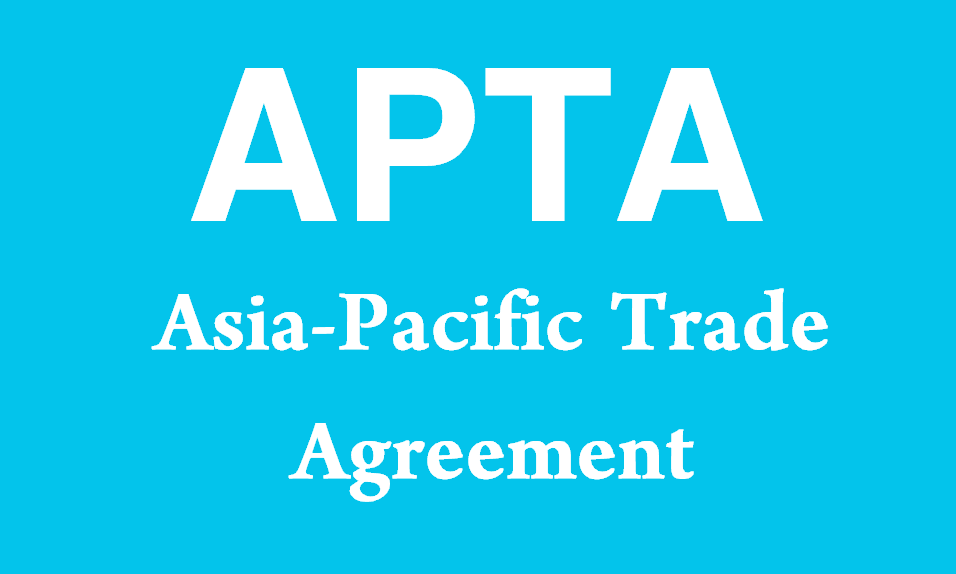What Does NAFTA Stand For?
The acronym “NAFTA” stands for the North American Free Trade Agreement. This trilateral trade agreement was established between the United States, Canada, and Mexico, aiming to eliminate trade barriers and facilitate the free flow of goods and services among these three countries. NAFTA, implemented in 1994, has played a significant role in shaping the economic landscape of North America by promoting economic integration and cooperation.

Comprehensive Explanation of the North American Free Trade Agreement
Introduction to NAFTA
The North American Free Trade Agreement (NAFTA) was signed by the United States, Canada, and Mexico on January 1, 1994. Its primary objective was to remove barriers to trade and investment between the three countries, thereby creating one of the world’s largest free trade zones.
Objectives and Provisions
Elimination of Tariffs
One of the cornerstone achievements of NAFTA was the elimination of tariffs on most goods traded between the member countries. This removal of tariffs facilitated increased trade and investment, boosting economic growth across North America.
Trade Rules and Regulations
NAFTA established a comprehensive set of trade rules and regulations to ensure fair competition and to protect intellectual property rights. These rules helped standardize practices across borders, making it easier for businesses to operate internationally.
Dispute Resolution Mechanisms
To manage and resolve trade disputes, NAFTA included dispute resolution mechanisms. These mechanisms provided structured processes for addressing disagreements between member countries, ensuring that trade issues were handled efficiently and fairly.
Economic Impact
Increased Trade and Investment
Since its implementation, NAFTA significantly increased trade and investment among the United States, Canada, and Mexico. Trade between the three countries more than tripled, reaching hundreds of billions of dollars annually.
Job Creation and Economic Growth
The agreement contributed to job creation and economic growth in all three countries. By opening markets and removing trade barriers, NAFTA encouraged businesses to expand operations and hire more workers, leading to economic development.
Changes in Manufacturing and Supply Chains
NAFTA also transformed manufacturing and supply chains. Companies optimized production by taking advantage of each country’s comparative advantages, leading to more efficient production processes and lower costs for consumers.
Sectoral Impacts
Agriculture
NAFTA had a profound impact on the agricultural sector. Farmers and agricultural businesses benefited from the removal of tariffs, which expanded market access and increased export opportunities.
Automotive Industry
The automotive industry saw significant growth under NAFTA. The agreement allowed for the seamless flow of automotive parts and vehicles across borders, fostering a highly integrated and competitive North American automotive market.
Services and Technology
NAFTA also expanded trade in services and technology. By reducing barriers to entry and protecting intellectual property rights, the agreement facilitated the growth of the tech sector and enhanced service trade among the member countries.
Criticisms and Challenges
Job Displacement
While NAFTA created jobs, it also led to job displacement, particularly in manufacturing sectors in the United States and Canada. Critics argued that some jobs were relocated to Mexico, where labor costs were lower.
Environmental and Labor Concerns
NAFTA faced criticism for its environmental and labor standards. Some argued that the agreement did not do enough to protect workers’ rights and the environment, leading to exploitation and ecological damage in certain regions.
Inequality and Economic Disparities
The benefits of NAFTA were not evenly distributed, leading to economic disparities. While some industries and regions thrived, others struggled to compete, exacerbating inequality within and between the member countries.
Legacy and Evolution
Transition to USMCA
In 2020, NAFTA was replaced by the United States-Mexico-Canada Agreement (USMCA), also known as NAFTA 2.0. The USMCA retained many core principles of NAFTA but introduced new provisions to address contemporary trade issues, such as digital trade and labor rights.
Continuing Influence
Despite its replacement, NAFTA’s influence continues to shape trade policy and economic relations in North America. The agreement’s legacy of economic integration and cooperation remains a foundational element of the region’s economic framework.
Notes to Importers
Importers play a vital role in the global economy, bringing goods and services across borders to meet demand and drive economic growth. This section offers comprehensive guidance to importers on various aspects of the importing process, including regulatory requirements, documentation, and best practices.
Understanding Import Regulations
Compliance with Local Laws
Importers must understand and comply with the laws and regulations of the importing country. This includes understanding tariff classifications, import quotas, and restrictions on certain goods. Compliance ensures smooth customs clearance and avoids legal penalties.
Customs Documentation
Proper documentation is essential for importing goods. Key documents include:
- Bill of Lading: A contract between the shipper and the carrier detailing the shipment.
- Commercial Invoice: A document from the seller to the buyer itemizing the goods sold.
- Certificate of Origin: A document certifying the country where the goods were manufactured.
- Import License: A permit that some countries require for importing certain goods.
Tariffs and Duties
Understanding Tariffs
Tariffs are taxes imposed on imported goods. Importers must be aware of the applicable tariffs for their goods, which vary by product and country of origin. These tariffs are often outlined in the Harmonized Tariff Schedule (HTS).
Calculating Duties
Duties are calculated based on the value, quantity, and type of goods imported. Importers need to factor these costs into their pricing strategies to ensure profitability.
Logistics and Shipping
Choosing the Right Shipping Method
Importers can choose between various shipping methods, such as air freight, sea freight, and land transport. The choice depends on factors like cost, delivery time, and the nature of the goods.
Working with Freight Forwarders
Freight forwarders can simplify the importing process by handling logistics, documentation, and customs clearance on behalf of the importer. Selecting a reliable freight forwarder is crucial for efficient and timely delivery.
Risk Management
Insurance
Importers should insure their goods against potential risks like damage, theft, or loss during transit. Cargo insurance provides financial protection and peace of mind.
Mitigating Supply Chain Risks
Diversifying suppliers and maintaining good relationships with key partners can help mitigate supply chain risks. Importers should also stay informed about geopolitical and economic conditions that could impact their supply chain.
Ethical Considerations
Sustainable Sourcing
Importers are increasingly expected to source goods responsibly. This includes ensuring that suppliers adhere to ethical labor practices and environmental standards.
Fair Trade Practices
Engaging in fair trade practices ensures that producers in developing countries receive fair compensation, contributing to sustainable development.
Sample Sentences Using “NAFTA” and Their Meanings
- NAFTA increased trade between the United States, Canada, and Mexico.
- This sentence means that the North American Free Trade Agreement boosted trade activity among the three member countries.
- Many manufacturing jobs moved to Mexico under NAFTA.
- This means that the implementation of the North American Free Trade Agreement led to the relocation of numerous manufacturing jobs to Mexico.
- NAFTA was replaced by the USMCA in 2020.
- This indicates that the North American Free Trade Agreement was succeeded by the United States-Mexico-Canada Agreement in the year 2020.
- The automotive industry flourished because of NAFTA.
- This sentence means that the automotive sector experienced significant growth and success as a result of the North American Free Trade Agreement.
- Critics argue that NAFTA failed to protect labor rights adequately.
- This means that some critics believe the North American Free Trade Agreement did not sufficiently safeguard the rights of workers.
Other Meanings of “NAFTA”
| Acronym | Full Form | Description |
|---|---|---|
| NAFTA | North American Free Trade Agreement | A trade agreement between the United States, Canada, and Mexico. |
| NAFTA | National Air Filtration Association | An organization focused on air filtration industry standards and education. |
| NAFTA | North American Forests and Trees Association | An organization dedicated to the conservation and management of forests in North America. |
| NAFTA | National Association of Financial and Tax Advisors | A professional association for financial and tax advisors in the United States. |
| NAFTA | North Atlantic Fisheries Treaty Agreement | An agreement regulating fishing activities in the North Atlantic region. |
| NAFTA | North American Flyball Tournament Association | An organization that promotes the sport of flyball in North America. |
| NAFTA | National Asphalt and Tar Fuel Association | An industry association for companies involved in asphalt and tar fuel production. |
| NAFTA | North American Flexible Training Association | A group promoting flexible training methods and education across North America. |
| NAFTA | National Agricultural and Food Trade Association | An organization representing the interests of agricultural and food trade industries. |
| NAFTA | North American Formula Technical Association | A technical body governing Formula racing standards and regulations in North America. |
| NAFTA | Native American Finance and Taxation Association | An organization focused on financial and taxation issues affecting Native American communities. |
| NAFTA | National Association of Fiber and Textile Arts | An organization dedicated to promoting fiber and textile arts across the United States. |
| NAFTA | North American Futures Trading Association | An association representing futures traders and exchanges in North America. |
| NAFTA | National Association of Freight and Transport Agents | A professional association for freight and transport agents. |
| NAFTA | North American Film and Television Academy | An organization dedicated to the promotion and development of film and television arts. |
| NAFTA | National Automotive Fleet and Trucking Association | An association representing the interests of automotive fleet and trucking industries. |
| NAFTA | North American Food Technologists Association | An organization focused on advancements and standards in food technology. |
| NAFTA | National Association of Finance and Trade Analytics | A professional body for finance and trade analysts. |
| NAFTA | North American Fire Training Association | An organization providing training and education for fire safety professionals. |
| NAFTA | National Association of Freight and Transport Advocates | A group advocating for the interests of freight and transport sectors. |






